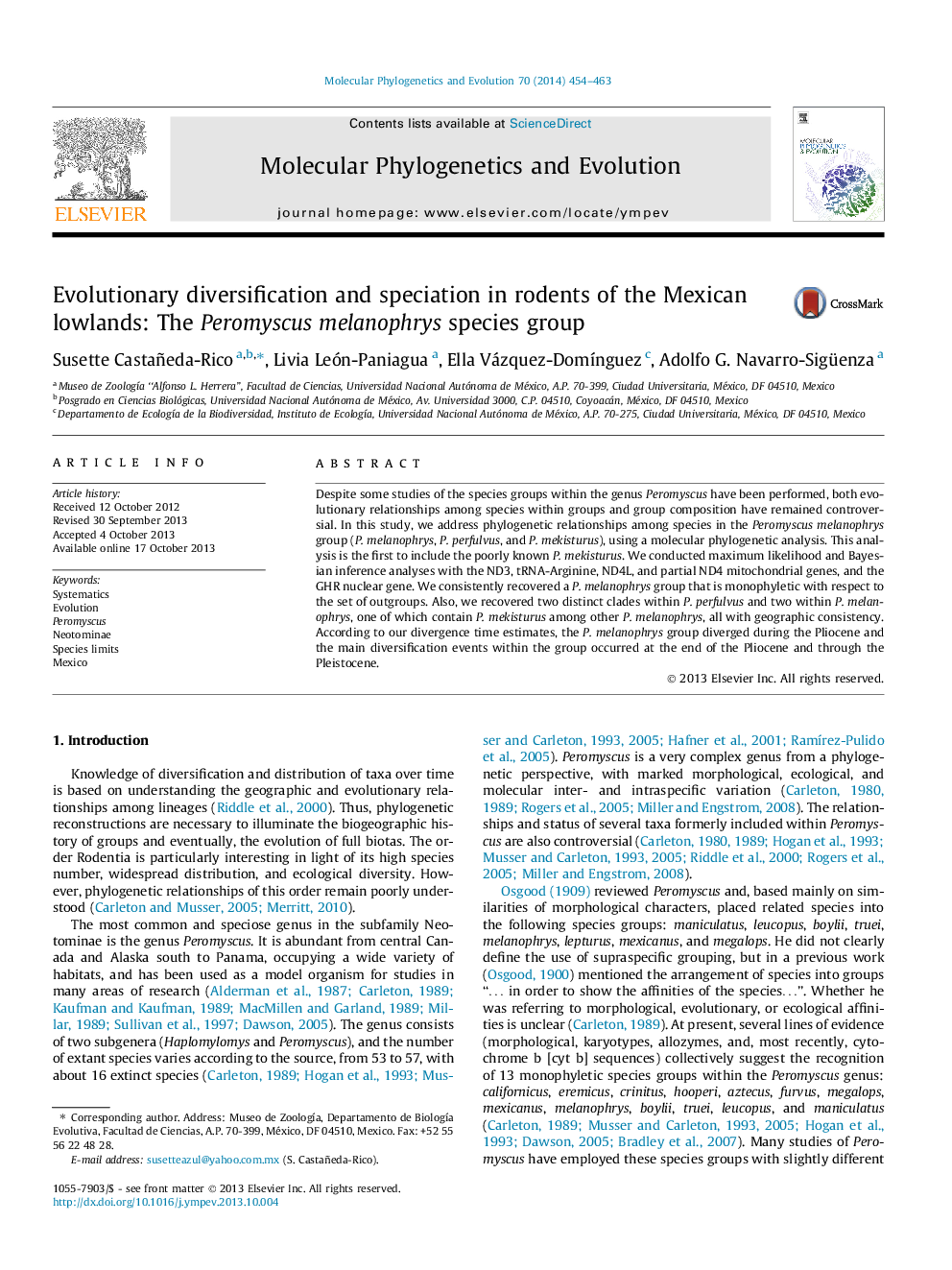| Article ID | Journal | Published Year | Pages | File Type |
|---|---|---|---|---|
| 5919411 | Molecular Phylogenetics and Evolution | 2014 | 10 Pages |
â¢We conducted the first molecular phylogenetic analysis of the whole Peromyscus melanophrys group.â¢We sequenced 98 samples of the mitochondrial genes, and 39 of nuclear gene (1315 bp and 829 bp, respectively).â¢We recognized a monophyletic group, consisting of four clades that exhibit geographic congruence.â¢Highlands represent geographical barriers for this group that has evolved in the lowlands and mid-elevation areas.
Despite some studies of the species groups within the genus Peromyscus have been performed, both evolutionary relationships among species within groups and group composition have remained controversial. In this study, we address phylogenetic relationships among species in the Peromyscus melanophrys group (P. melanophrys, P. perfulvus, and P. mekisturus), using a molecular phylogenetic analysis. This analysis is the first to include the poorly known P. mekisturus. We conducted maximum likelihood and Bayesian inference analyses with the ND3, tRNA-Arginine, ND4L, and partial ND4 mitochondrial genes, and the GHR nuclear gene. We consistently recovered a P. melanophrys group that is monophyletic with respect to the set of outgroups. Also, we recovered two distinct clades within P. perfulvus and two within P. melanophrys, one of which contain P. mekisturus among other P. melanophrys, all with geographic consistency. According to our divergence time estimates, the P. melanophrys group diverged during the Pliocene and the main diversification events within the group occurred at the end of the Pliocene and through the Pleistocene.
Graphical abstractDownload full-size image
